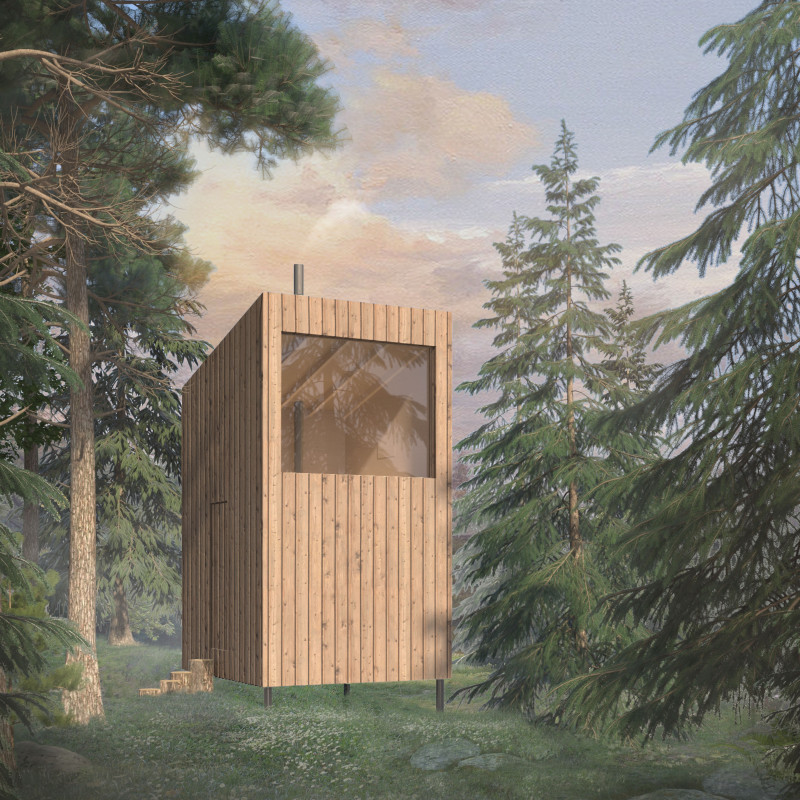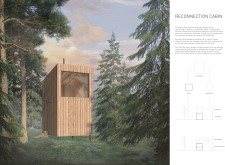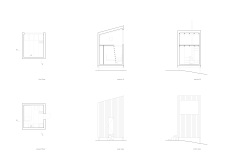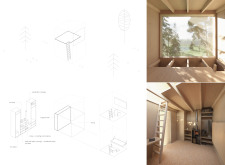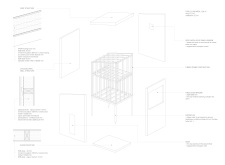5 key facts about this project
The Reconnection Cabin offers a thoughtful design that prioritizes solitude and reflection. Located in a remote natural setting, the cabin aims to disconnect occupants from the noise of the modern world. Its two-level layout separates living spaces from areas designated for meditation. This separation enhances the experience of each space, allowing for deeper engagement with the environment while promoting tranquility.
Ground Floor Design
The ground floor serves as a quiet living area, intentionally isolated from the outside environment. It creates a private space for individuals to think, read, or relax without disturbances. Natural light enters freely through the skylights, warming the interior and adding an inviting quality to the space. The minimal and functional furnishings keep the focus on personal experience rather than the surrounding decor.
First Floor Experience
Moving to the first floor, occupants find themselves in a space defined by expansive views of the landscape. A large window frames this scenery, allowing occupants to connect with nature and recharge. Ascending to this level symbolizes leaving behind everyday concerns. A small ventilation window invites fresh air and gentle sounds in, enhancing the overall atmosphere and contributing to moments of meditation.
Materials and Construction
The cabin uses durable materials suitable for its natural surroundings. The roof is made of EPDM roofing foil, ensuring protection against weather conditions. The walls feature plywood and mineral insulation, which work together to maintain a comfortable indoor climate. Timber rafters add both stability and a natural look. Additionally, micro-piles allow the cabin to adapt to different landscapes, reducing the impact on the ground below.
Design Details
Each element of the Reconnection Cabin is designed to create a meaningful experience. The placement of windows invites in light while fostering a connection with the landscape. This thoughtful integration helps create a space that feels both open and secure. The cabin encourages occupants to enjoy living while also providing a peaceful setting for reflection, merging comfort with the beauty of nature.


